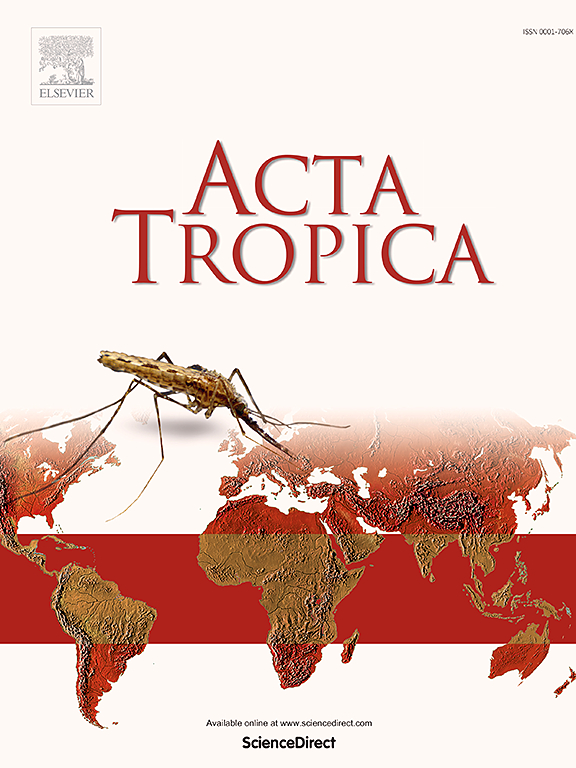Optimizing laboratory blood feeding success of Anopheles maculatus: Effects of pre-feeding preparation and cues
IF 2.5
3区 医学
Q2 PARASITOLOGY
引用次数: 0
Abstract
Anopheles maculatus, a primary malaria vector in Thailand’s forested and foothill regions, is challenging to propagate in the laboratory due to low blood-feeding success with artificial membrane systems. This study systematically evaluated methods to enhance blood-feeding success in An. maculatus females by assessing the effects of sugar deprivation duration (2, 8,and 16 h), membrane type (bovine intestine, sausage casing, chicken skin, and live mice),and attractant cues (black light and BG-Lure). Results showed that 16-hour sugar deprivation significantly increased feeding success (42.3 %) compared to shorter deprivation periods (15.3 % at 8 h, 14 % at 2 h, and 15.5 % with continuous sugar access; p < 0.001). Among feeding options, live mice yielded the highest feeding success (59.3 %), followed by bovine intestine (35.3 %), sausage casing (24.7 %), and chicken skin (10.7 %). The combination of black light and BG-Lure attractants further boosted feeding success to 82 %. These findings provide a foundation for improved laboratory rearing of An. maculatus, supporting future malaria vector research and control strategies.

优化斑纹按蚊的实验室取血成功率:取血前准备和线索的影响。
斑纹按蚊(Anopheles maculatus)是泰国森林和山麓地区的一种主要疟疾媒介,由于人工膜系统的采血成功率较低,因此在实验室中繁殖具有挑战性。本研究系统地评价了提高安阳市血供成功率的方法。通过评估糖剥夺时间(2、8和16小时)、膜类型(牛肠、肠肠衣、鸡皮和活小鼠)和引诱剂线索(黑光和bg引诱剂)的影响。结果表明:16 h无糖组摄食成功率(42.3%)显著高于较短无糖组(8 h 15.3%, 2 h 14%,连续无糖组15.5%);P < 0.001)。其中,活体小鼠的摄食成功率最高(59.3%),其次是牛肠(35.3%)、肠肠衣(24.7%)和鸡皮(10.7%)。黑光和BG-Lure引诱剂的组合进一步将取食成功率提高到82%。本研究结果为改进室内饲养提供了基础。Maculatus,支持未来疟疾病媒研究和控制战略。
本文章由计算机程序翻译,如有差异,请以英文原文为准。
求助全文
约1分钟内获得全文
求助全文
来源期刊

Acta tropica
医学-寄生虫学
CiteScore
5.40
自引率
11.10%
发文量
383
审稿时长
37 days
期刊介绍:
Acta Tropica, is an international journal on infectious diseases that covers public health sciences and biomedical research with particular emphasis on topics relevant to human and animal health in the tropics and the subtropics.
 求助内容:
求助内容: 应助结果提醒方式:
应助结果提醒方式:


